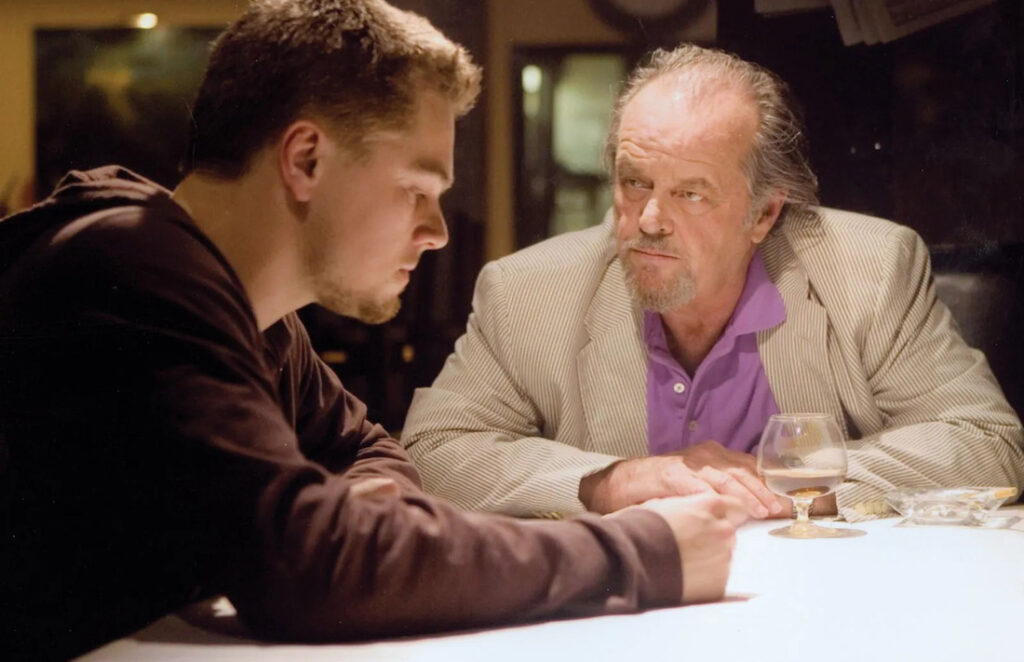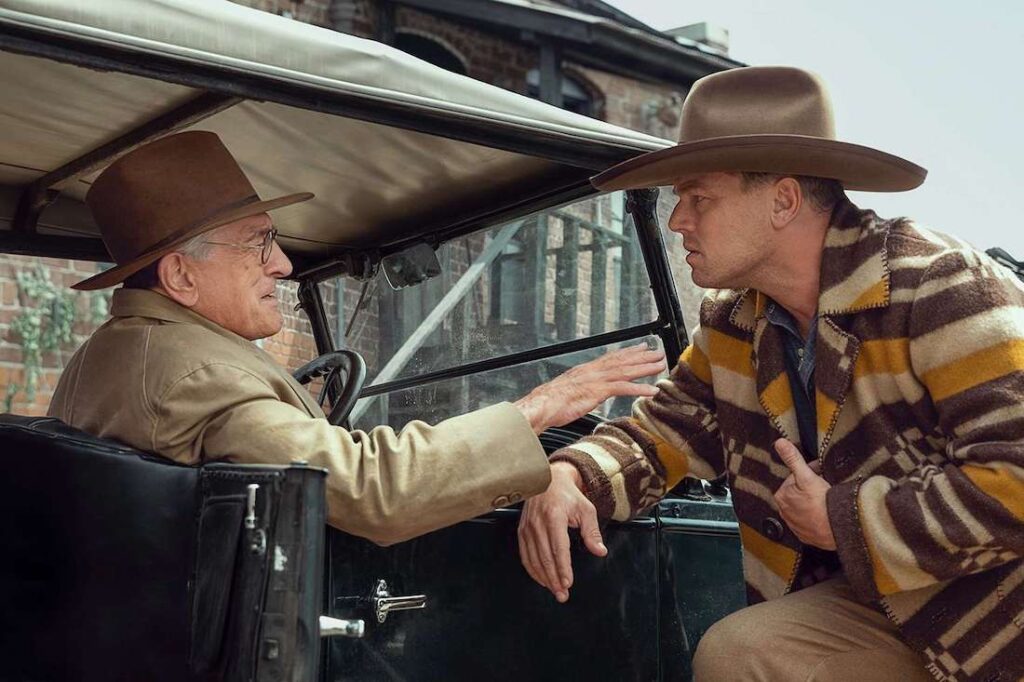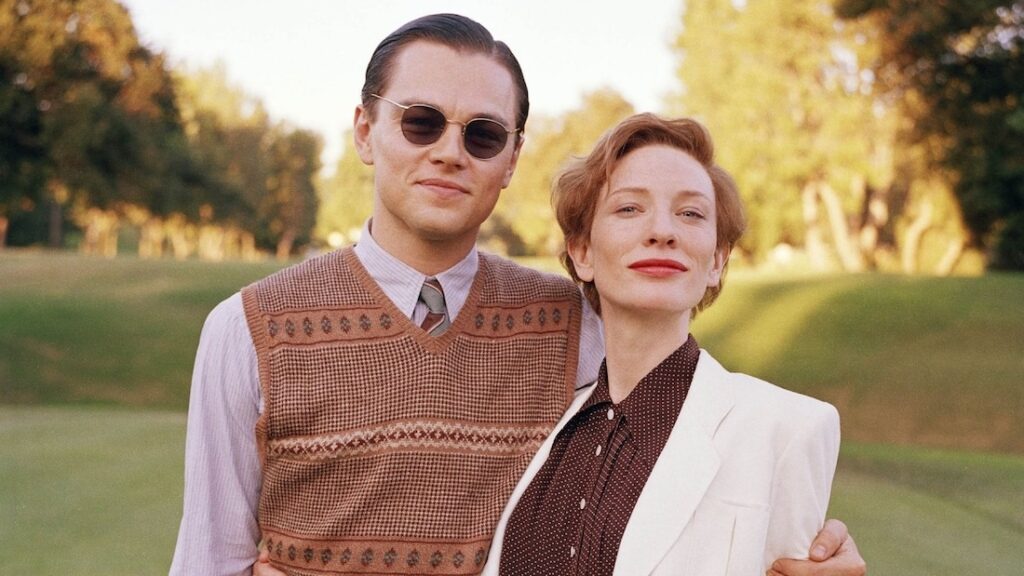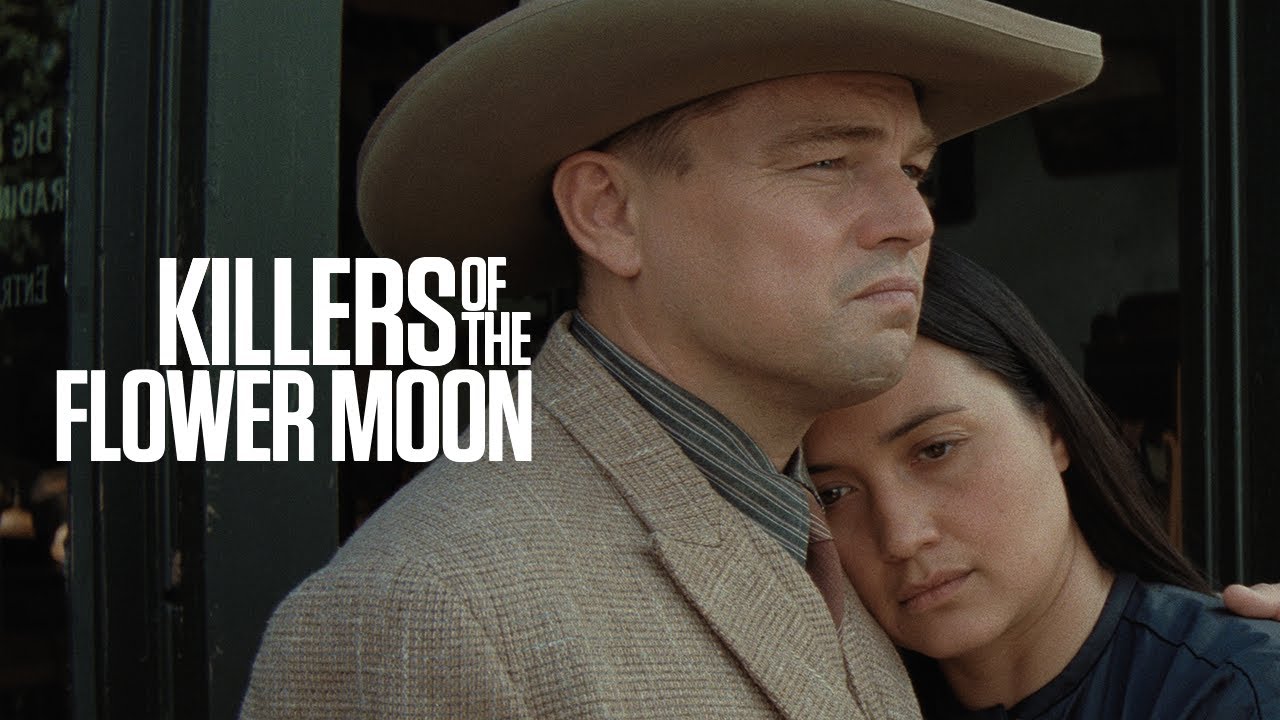Martin Scorsese always seems to have a passion project. He also always has an unwavering love of the art of film, which makes his movies a highly-anticipated event. Killers of the Flower Moon is Scorsese’s latest event.
Before the movie even begins, Scorsese briefly shares how passionate he was about bringing this film to life, and then, even at the very end, you can see how much he cared about this story and the people with whom the film is about.
Killers of the Flower Moon is based on a true story and inspired by the nonfiction book, Killers of the Flower Moon: The Osage Murders and the Birth of the FBI written by David Grann. It’s a heartbreaking tale centering on the fraught relationship between Ernest (Leonardo DiCaprio) — a white man – and Mollie (Lily Gladstone) — an Osage woman. Ernest and Mollie are at the center of a conspiracy in which envious killers target the oil-rich Osage people of Oklahoma, slowly taking their wealth by sinister means.
Though Killers of the Flower Moon tells a completely unique story, it boasts several storytelling elements and themes that have appeared in many of Martin Scorsese’s previous films that today’s screenwriters can use in their own work.
Let’s take a look at a few of them!
Competing Clans
Scorsese is a master at pitting two groups against each other. In The Departed, it was the police versus a Boston crime syndicate with moles infiltrating both camps. In Gangs of New York, two rival gangs fight for control of the Five Points.
Scorsese focuses his story on two individuals who play a significant role in the success or failure of their respective clans. For example, in The Departed, Billy (Leonardo DiCaprio) is a police officer who infiltrates the mob in an attempt to reveal the cop feeding them information. Colin (Matt Damon) is the police officer working for the mob.
Killers of the Flower Moon is about two clans fighting for their own versions of survival — the Osage people whose existence is threatened by a group of white men plotting to take over their wealth through marriage and then murder.

‘The Departed’ (2006)
The Root of All Evil
At some point in Killers of the Flower Moon, Ernest proclaims that he loves money more than anything, except maybe his wife. Money is what drives this movie, from the wealth accumulated by the Osage people through oil to those who crave to have it themselves.
Money is constantly popping up in Scorsese films, perhaps most famously in The Wolf of Wall Street – the true story of a stockbroker whose excess wealth and obsession with money is both his motivation and downfall. Casino and The Aviator are also Scorsese stories centering around wealth and power.
Greed is a constant theme in movies because it’s a powerful force in our lives. Look no further than Killers of the Flower Moon, the true story of those who crave money so much they’ll systematically murder a group of people.
Read More: What Hollywood Wants (and How to Give It to Them): Intellectual Property Adaptations

‘The Wolf of Wall Street’ (2013)
Violence Comes Quick and Easy
Scorsese doesn’t hold back on violence in his movies. They’re as gruesome as they are flawless in their execution. In The Irishman, hitman Frank Sheeran (Robert DeNiro) nonchalantly will shoot someone in the back of the head. The Departed is another example of abrupt violence that comes easily, especially in the last ten minutes of the movie.
Similarly, in Killers of the Flower Moon, violence and death are carried out by professionals who know that brevity is key.
In one scene in particular, which I won’t spoil because you probably won’t see it coming anyway, one man tosses a burlap sack over a man’s head and pushes him down an alley where a second man stabs him to death. Violence in Scorsese movies, if done by a “professional,” won’t be long-winded with pleading from the victim or hesitancy by the killer – it’s quick, easy, and often unexpected.
Read More: What to Consider When Writing Violence
The True Story
Looking back at Scorsese’s feature films, most involve the telling of a true story. From Raging Bull to Goodfellas and The Aviator to The Wolf of Wall Street, Scorsese has delivered classic films about the struggles of real people who have fought against the odds in pursuit of their dreams.
Killers of the Flower Moon is based on a true story. The book it’s named after, however, goes far deeper into the Bureau of Investigations aspect than the intimate lives of the Osage people and those conspiring to take their wealth.
Scorsese, who co-wrote the film, took only a fraction of the source material and changed it to reflect the story he was more passionate to tell. For screenwriters or storytellers eager to bring a true story to life, the amount of material they encounter is overwhelming. The key is to focus on what the story is about and never divert from that concept.

‘Killers of the Flower Moon’ (2023)
The Aviator didn’t show much of Howard Hughes’s childhood because the story was about his early adult life and ascent into becoming a film director and aerospace tycoon, both of which involved aviation – a twenty snapshot of a life that expanded more than 70 years. The movie was The Aviator and focused on that aspect of his life.
Somewhere there is a story of the creation of the FBI (J. Edgar touched on that), but Scorsese’s efforts were the killers and Osage people, which involved the true-life relationship between Ernest and Mollie.
Read More: How to Master Creative Liberties in True Story Screenplays
Real People, Fake Dialogue
In the first scene between Ernest and his uncle, William Hale (Robert DeNiro), the two discuss everything from Ernest’s wartime experiences to the type of women he’s attracted to as well as the oil boom in the region. This scene reveals a lot regarding who these two characters are, their relationship to one another, and their place in the world. And yet, it’s likely none of this conversation truly took place but rather had to be invented to advance the story.
Sometimes there are records of conversations, but most of the time the majority of dialogue in a true story has to be made up. Scorsese has to have taken this approach with any number of his previous films based on real life. The intimate scenes on the golf course in The Aviator between Hughes and Katherine Hepburn (Cate Blanchett) were likely fabricated.

‘The Aviator’ (2004)
Casino is another Scorsese classic that boasts that it’s a fictional story with characters adapted from a true story – in fact, much of the dialogue between DeNiro and Joe Pesci in that film was improvised and not lifted from real conversations.
Read More: 8 of the Best Book-to-Film Adaptations of the Past 8 Years
—
Turning true events into a movie involves embellishing and changing settings, characters, and dialogue to tell a story that remains intriguing for an audience. Scorsese is a master storyteller. He has the ability to put the audience into an exciting world and turn major life events into a feature film. Killers of the Flower Moon weaves a complicated story into a 3.5-hour narrative that educates, engages, and encourages the audience to look deeper into the tragic history of the Osage people.
Read More: 101 Story Prompts Based on True Events
CHECK OUT OUR PREPARATION NOTES SO YOU START YOUR STORY OFF ON THE RIGHT TRACK!
The post How ‘Killers of the Flower Moon’ Echoes Martin Scorsese’s Previous Films appeared first on ScreenCraft.
Go to Source
Author: Steven Hartman


